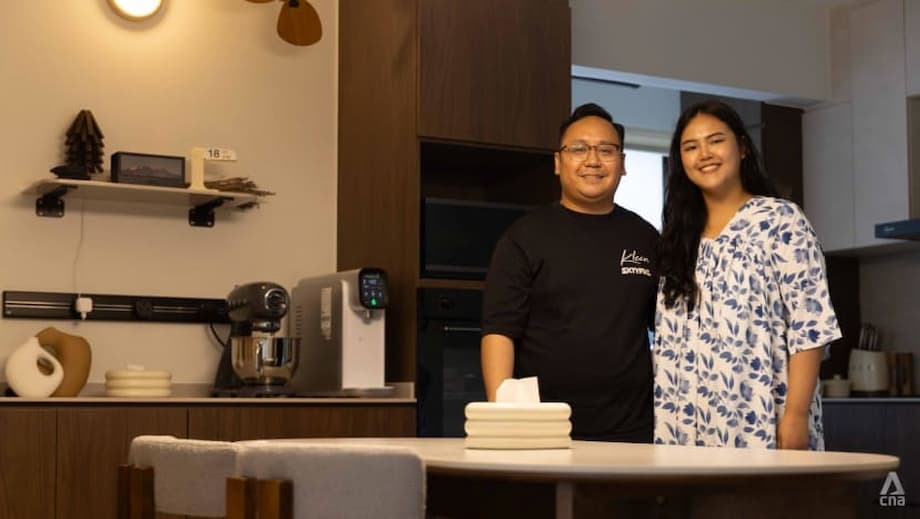Singapore’s Furniture Market in Flux: The Rise of E-Commerce Giants
Singapore’s furniture retail landscape is undergoing a seismic shift. Once dominated by established local brands and bustling showrooms, the market is now being transformed by the rapid rise of e-commerce platforms like Shopee and Taobao. First-time homeowners and young buyers are increasingly turning to these online giants, drawn by lower prices, greater convenience, and a seemingly endless variety of options. This trend is not only reshaping consumer habits but also forcing local retailers to rethink their business models in the face of unprecedented competition.
- Singapore’s Furniture Market in Flux: The Rise of E-Commerce Giants
- Why Are Singaporeans Choosing Online Furniture Shopping?
- The Impact on Local Furniture Retailers
- The Broader E-Commerce Boom in Singapore
- Regional and Global Forces: The China Factor
- New Business Models: Dropshipping and Beyond
- Sustainability and the Future of Furniture Retail
- In Summary
Why Are Singaporeans Choosing Online Furniture Shopping?
The appeal of buying furniture online is clear for many Singaporeans, especially younger, tech-savvy homeowners. Platforms like Taobao and Shopee offer prices that can be up to three times cheaper than those found in local stores. For example, a customizable electric sofa might cost S$1,200 on Taobao before shipping, compared to over S$3,000 in a Singapore showroom. Even after factoring in shipping and assembly, many couples report furnishing their entire homes for as little as S$6,000.
Beyond price, online platforms provide unparalleled convenience. Busy professionals like Nurasheila Abdul Razak and Syakir Sabirin, who furnished about 90 percent of their home online, cite the ability to shop at any time and have products delivered directly to their doorsteps as major advantages. The variety is another draw—buyers can browse thousands of styles, colors, and configurations that would be impossible for any single showroom to display.
Language barriers, once a significant hurdle for platforms like Taobao, have been reduced with the introduction of English-language versions and improved translation tools. As a result, platforms report strong double-digit growth in Singapore’s home and furniture category, with Shopee seeing its buyer numbers double and sales triple in the past five years.
Changing Attitudes: From Permanent to Temporary Furniture
Another factor driving the shift is a change in how younger Singaporeans view furniture. Unlike previous generations who saw furniture as a long-term investment, today’s buyers are more trend-focused and see their purchases as temporary—often tied to the lifespan of their flat or their current tastes. This “buy and throw” mindset is facilitated by the affordability and accessibility of online options, but it also raises concerns about sustainability and waste.
The Impact on Local Furniture Retailers
For Singapore’s homegrown furniture brands like Cellini and Commune, the rise of e-commerce has brought significant challenges. Local retailers face high rental costs for showrooms and warehouses, even as many have offshored manufacturing to keep prices competitive. The ability of overseas factories to sell directly to consumers online, bypassing traditional retail channels, puts further pressure on margins.
Some local businesses have responded by downsizing or shifting their focus. Urban Salvation, for example, has reduced its physical footprint to cut costs. Others worry about becoming mere “showrooms” for customers who browse in person but ultimately buy online at lower prices. This phenomenon, known as “showrooming,” is a growing concern across the retail sector.
Retailers in nearby Johor Bahru, Malaysia, also attract Singaporean buyers with lower prices, thanks to reduced operating costs. The competition is not just local but regional, as Southeast Asia becomes a battleground for both traditional and digital furniture sellers.
Case Study: Cellini’s Strategy for Survival and Growth
Cellini, a premium Singaporean furniture brand, offers a glimpse into how local companies are adapting. Founded in 1986 and inspired by the Italian sculptor Benvenuto Cellini, the brand has built a reputation for quality and design. Cellini now operates 57 stores across four countries and runs its own factories in Indonesia and Malaysia. This vertical integration allows Cellini to control quality and minimize supply chain disruptions—a key advantage during the pandemic.
While physical stores remain central to Cellini’s strategy, the company has invested in digital experiences, including a virtual showroom and digital content to drive online sales. E-commerce still accounts for less than 10 percent of revenue, but the company recognizes the need to engage younger, digitally native customers. Cellini is also exploring augmented reality and other technologies to enhance the shopping experience, though it is waiting for the technology to mature before full-scale adoption.
The Broader E-Commerce Boom in Singapore
Singapore’s embrace of e-commerce extends far beyond furniture. The country’s e-commerce market reached US$8.2 billion in gross merchandise volume in 2022 and is projected to grow to US$11 billion by 2025. Furniture and household equipment make up about 30 percent of online sales, second only to computer and telecommunications equipment.
Major online furniture retailers in Singapore now include not just Shopee and Taobao, but also ikea.com, amazon.sg, fortytwo.sg, fairprice.com.sg, and hipvan.com. Together, the top three online stores account for over a third of the market share. The competitive landscape is fierce, with both global giants and local startups vying for consumer attention.
Singapore’s strategic location and advanced logistics infrastructure make it a key hub for e-commerce in Southeast Asia. The country hosts numerous fulfillment centers and attracts major logistics firms like FedEx, UPS, and DHL. However, high logistical costs remain a challenge, especially for cross-border trade.
Omnichannel Shopping: The New Normal
Academic research highlights a growing preference for omnichannel shopping—where consumers blend online and offline experiences. While younger, higher-income, and more educated buyers are more likely to shop online, many still value the ability to see and touch furniture in person before making a purchase. Retailers are responding by integrating digital and physical channels, offering personalized services, and enhancing post-sale support to build customer loyalty.
As one study published in Nature notes, “The omnichannel model, which integrates online convenience with offline physical experiences, is increasingly favored, with standalone branded websites and physical stores both playing important roles.” This approach allows retailers to target different demographic segments with tailored strategies and maximize customer satisfaction.
Regional and Global Forces: The China Factor
The influx of cheap Chinese goods is not unique to Singapore. Across Southeast Asia, local industries are grappling with a flood of low-cost imports from China, which has redirected exports to the region in response to Western tariffs and slowing domestic demand. Chinese manufacturers benefit from government support, tax rebates, and highly efficient supply chains, making it difficult for local producers to compete on price.
Free trade agreements and improved logistics have facilitated the flow of goods, while platforms like Taobao and AliExpress make it easy for consumers to buy directly from Chinese factories. This trend is seen not just in furniture but in sectors ranging from textiles to electronics. Local manufacturers are being forced to cut prices, focus on premium products, or find new niches to survive.
Supply Chain and Logistics: The Backbone of E-Commerce
The rapid growth of e-commerce has placed new demands on logistics providers. Handling bulky, fragile items like furniture requires specialized services for delivery, assembly, and returns. Singapore’s advanced logistics sector is well-positioned to meet these needs, but high costs and the complexity of cross-border trade remain obstacles.
According to McKinsey & Company, Southeast Asia’s e-commerce markets are entering a new phase, with customers buying a wider range of products online and merchants diversifying their sourcing. Logistics providers will need to adapt by offering end-to-end, cross-border services and leveraging technology to improve efficiency and customer experience.
New Business Models: Dropshipping and Beyond
One of the most disruptive trends in furniture e-commerce is the rise of dropshipping. In this model, online sellers outsource order fulfillment to third-party suppliers, who ship products directly to customers. This allows retailers to offer a wide range of products without holding inventory or managing complex logistics themselves.
Platforms like Shopify, AliExpress, and DHgate have made it easier than ever to start a furniture dropshipping business. While this model lowers barriers to entry and enables rapid scaling, it also intensifies competition and makes it harder for individual brands to stand out. Quality control and customer service become critical differentiators, as buyers are often wary of damaged or subpar products.
Challenges and Opportunities for Local Brands
Despite the challenges, there are opportunities for Singapore’s furniture retailers to carve out a niche. Experts suggest that local brands can compete by offering exceptional service, unique in-person experiences, and high-quality, durable products. Some, like bespoke furniture makers, focus on craftsmanship and customization—areas where mass-produced imports struggle to compete.
Cellini’s approach of combining advanced manufacturing with skilled craftsmanship and customer feedback is one example of how local brands can differentiate themselves. Others are investing in digital marketing, social media engagement, and omnichannel strategies to reach younger buyers and build brand loyalty.
Sustainability and the Future of Furniture Retail
The shift toward disposable, trend-driven furniture raises important questions about sustainability. The “buy and throw” mindset contributes to waste and environmental impact, prompting calls for more eco-friendly and durable options. Globally, there is a growing demand for sustainable materials, modular designs, and products that can adapt to changing needs.
Singapore’s furniture market is responding with a surge in demand for modern, minimalist, and space-saving designs, as well as eco-friendly options. Government initiatives promoting home ownership and renovation are also driving market growth. As the market evolves, retailers will need to balance affordability and convenience with sustainability and quality to meet the expectations of increasingly discerning consumers.
In Summary
- Singapore’s furniture retail sector is being transformed by the rise of e-commerce platforms like Shopee and Taobao, which offer lower prices, greater convenience, and a wider selection than traditional stores.
- Local retailers face intense competition from overseas factories, regional players, and new business models like dropshipping, forcing them to adapt or risk obsolescence.
- Consumers, especially younger buyers, are increasingly trend-focused and view furniture as temporary, raising concerns about sustainability and waste.
- Omnichannel shopping—blending online and offline experiences—is becoming the norm, with retailers integrating digital and physical channels to meet diverse customer needs.
- Singapore’s advanced logistics infrastructure supports the e-commerce boom, but high costs and cross-border complexities remain challenges.
- Opportunities exist for local brands to differentiate through quality, service, and unique experiences, while the market as a whole is shifting toward more sustainable and adaptable furniture solutions.




